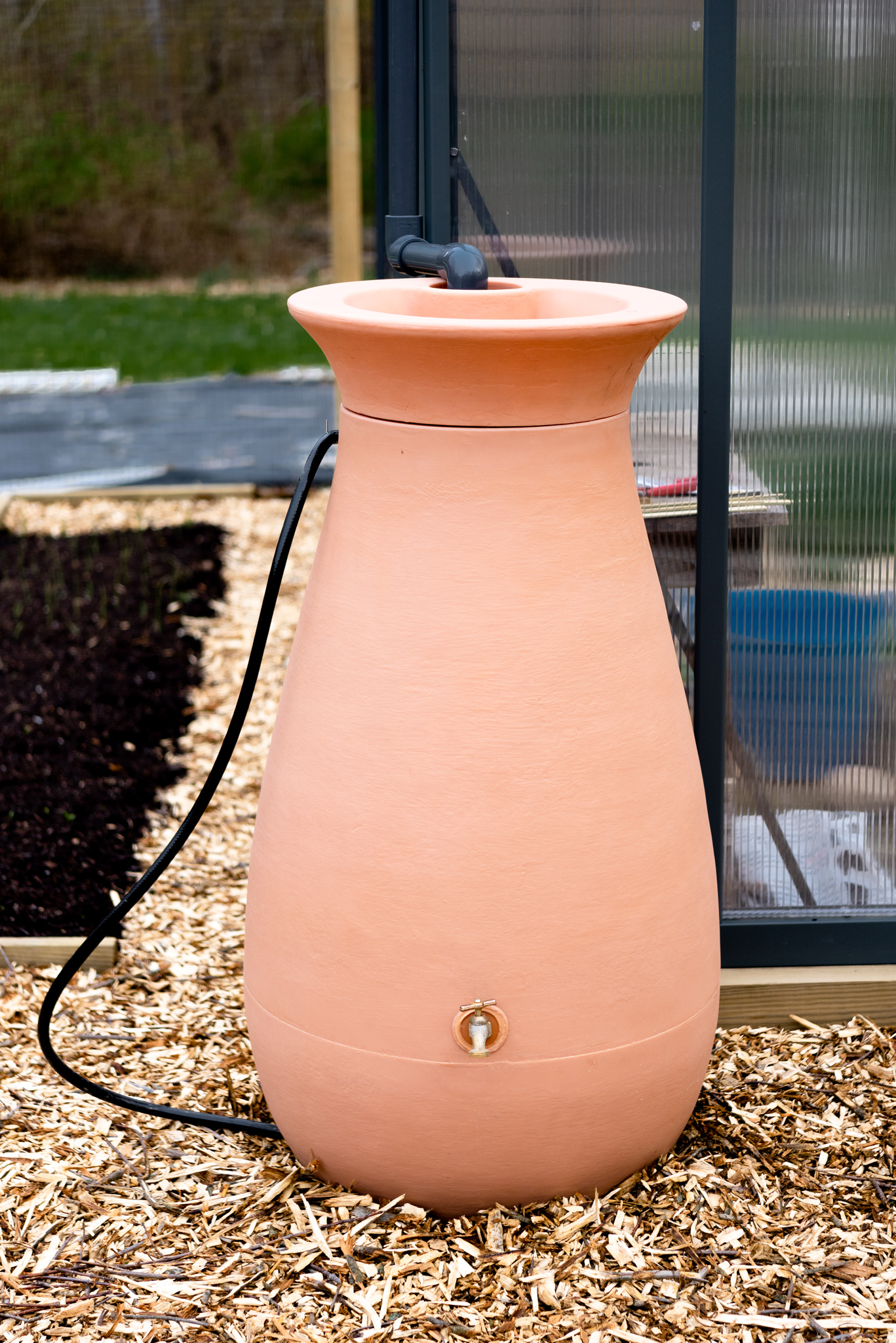
Save Water With A Rain Barrel System
It's good for you, and your garden.
Saving rainwater with a home rain barrel system also saves you money, time and energy in the garden. Just like home composting, it’s a small and easy activity that has a big environmental return.

Is a rain barrel worth it?
If you live in an area that has both wet and dry seasons, and you have a regular use for the stored rainwater, then my answer would be: absolutely!
In my case, I have large edible and ornamental gardens, several pots and a greenhouse to keep watered. While I do love cutting down on my water bill by using saved rainwater, I also love the ease of having a water source right next to the greenhouse while I’m starting seeds.
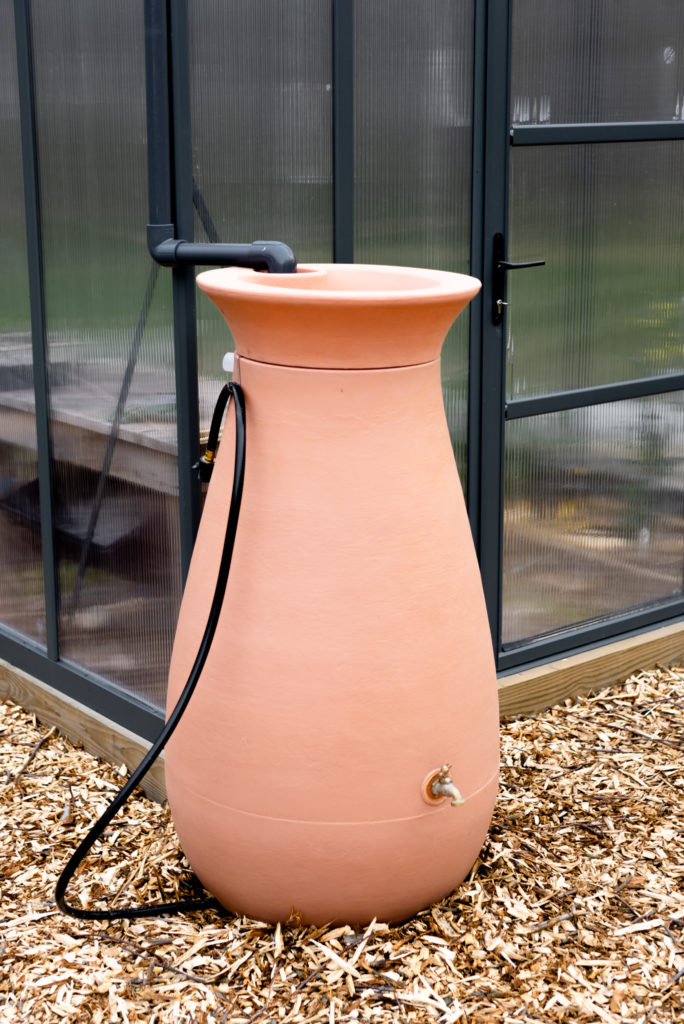
Choosing the best rain barrel system and kits
There are many ways to set up a rain barrel system, and it doesn’t have to be ugly! There are finally some nice rain barrels on the market that are beautiful and functional. Things to consider when purchasing a rain barrel system include:
- Size/Capacity: You’d be surprised at how quickly a rain barrel will fill up with water. Use this calculator from Gardener’s Supply to help estimate the size you should buy. Unless you are collecting rainwater from a tiny roof, you’ll probably want the largest size.
- Functionality: Rain barrels are just the container to store saved rainwater, so they won’t naturally have pressure to move water to the garden. Some kits have an add-on pump that you can install, or you can choose to elevate your rain barrel system for gravity to naturally do it’s job.
- Aesthetics: Do you want your rain barrel to blend in or stand out? Since our rain barrel lives smack in the middle of the garden, we decided to make it a decorative feature.
Our rain barrel
We chose this 65 gallon rain barrel system from Gardener’s Supply/Algreen and have been using it for one year. We love it!
It really does look like terra cotta but without the weight and delicacy. I like that there are two different ways to use the water (the front spigot and the side hose) and the construction is super sturdy. I can easily move it by myself when it comes time to take it indoors for winter.
There is a mesh screen that helps keep out the inevitable dead bugs and debris, along with an overflow valve and ability to connect to more rain barrels (I am tempted to buy more but this is a slippery slope situation).
The top of the rain barrel can also be used as a decorative planter, but I like to leave it open as more of a bird bath/pollinator drinking pond.
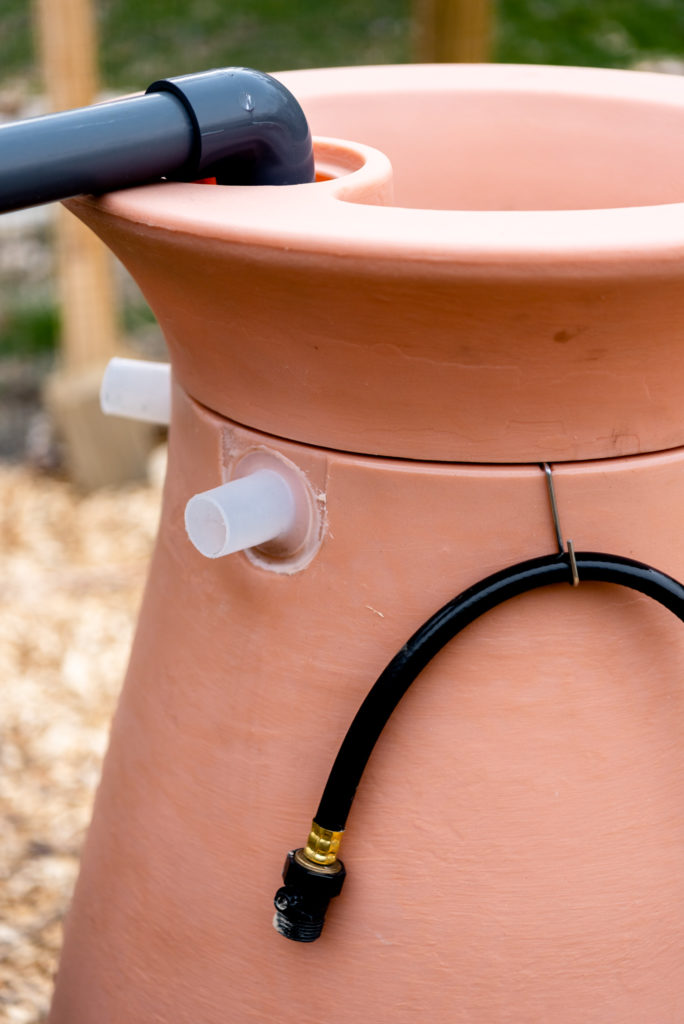
How to set up a rain barrel
- Location: Choose the best location for your rain barrel that has easy access to collect the water and is close to areas where you want to use the water. We collect rainwater from our greenhouse in the middle of the garden and it’s so convenient having the water right where we need it.
(Thinking about greenhouses now? You can read all about why we chose the Palram Glory greenhouse kit in our previous post.) - Assemble the kit: If you ordered a rain barrel kit, assemble it fully and give it a little test with a regular hose to make sure there are no leaks or defects. You’ll want to know about it before the next big thunderstorm.
- Connect to a downspout: Your rain barrel system will need to connect to a downspout gutter system to be effective. You are collecting rainwater from the surface area of a roof, not just from rainwater falling from the sky. Cut your downspout to fit the height of your rain barrel and add an elbow to direct the water.
- Overflow: Expect and make room for overflow. There are spring days where we’ll get 5 to 6 inches of water at once. This will quickly overflow your rain barrel system and that water needs a place to go. Consider surrounding your rain barrel system with gravel for the best drainage.
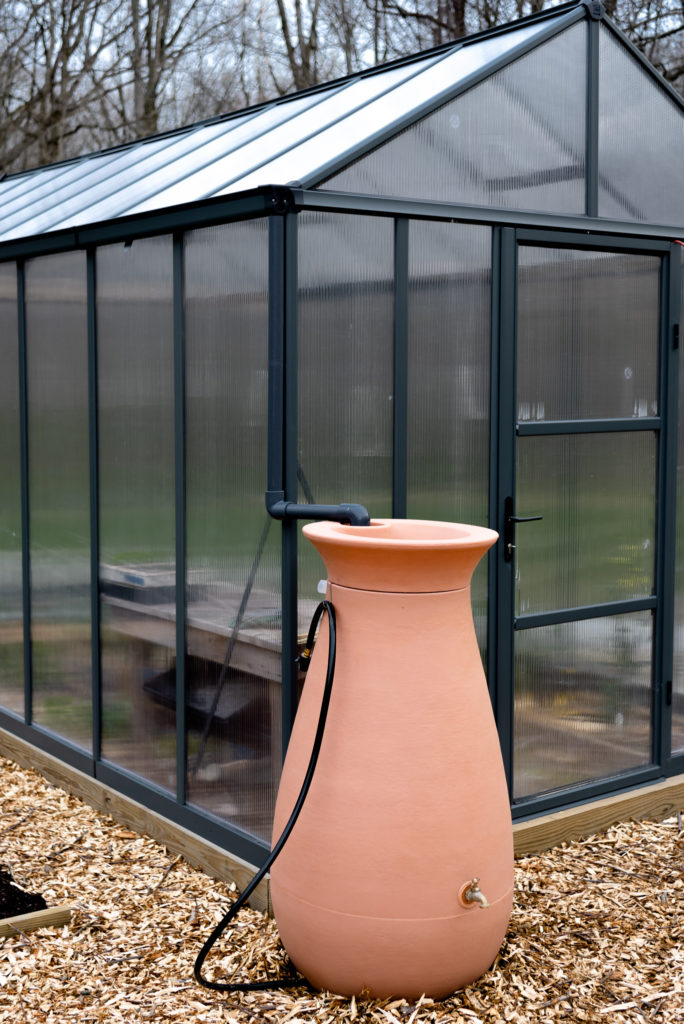
How to use saved rainwater
Way to go you little environmentalist you. Now that you have your rain barrel system set up, you can use it in a variety of ways for a variety of things.
- Watering can: Grab your favorite watering can and fill it up from the rain barrel spigot. Wander around the garden looking for anything that needs a drink.
- Hose: If the spigot on your rain barrel is threaded you can connect a regular garden hose. The water won’t be pressurized so it will flow with only the power of gravity. This can still be great if the rain barrel is full.
- Pump: If you want to make the water pressurized, you can add a pump to your rain barrel system. You’ll also need electricity and space for the pump.
- Water pots: Pots will dry out faster than anything in the garden. Keep them regularly watered with water from your rain barrel system.
- Seed Starting: Use a smaller and more gentle watering can for seed starting, but using saved rainwater is great.
- Inside the greenhouse: Sometimes I wish I could just open the roof of the greenhouse on rainy days. When the drip irrigation system is off in the cold shoulder seasons, having some stored rainwater close by is the best for spot-watering.
- Newly seeded garden beds: Don’t turn on the whole sprinkler system just to water in those little carrot seeds you just planted. Use a gentle watering can with saved rainwater to get them to sprout.
- Bird bath: Aw. Give the birdies and bees a spa day when the bird bath runs dry.
- Cleaning tools: It’s a really good practice to clean your tools after each time they’re used. Your tools will last longer and cleaning them helps prevent the spread of diseases. Water from your rain barrel will work perfectly.
- Washing hands: I always get that important phone call the second I stick my hands in the soil. Quickly rinse off your hands from the rain barrel spigot when you need a quick clean-up.
- Watering houseplants: Don’t forget about your indoor plant babies. They’ll love the non-chlorinated rainwater.
- NOT DRINKING: Water from the rain barrel is not safe to drink.
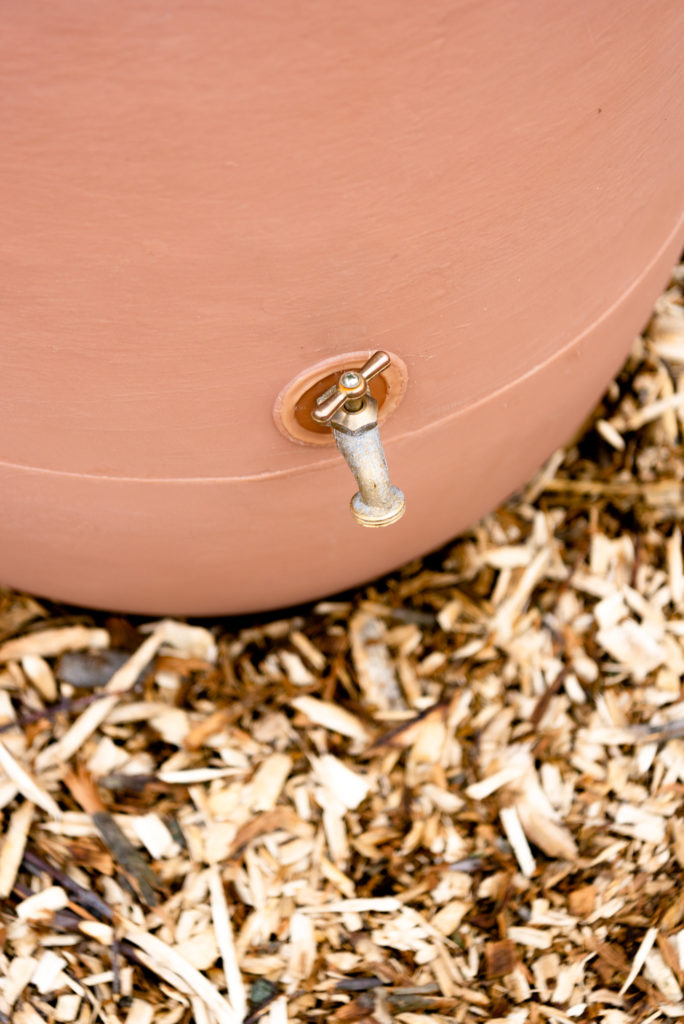
Questions and problems with rain barrels
How long can you keep rainwater in a barrel?
Indefinitely! In cold climates you will need to remove the rain barrel in the winter, but otherwise there is no timeline for using your rainwater. However, be aware that with stagnant water, you will start to get mosquitos laying eggs, so try and use the water regularly.
How fast will a 50 gallon rain barrel fill up?
In general, about one hour. This depends on the square footage of your roof surface area, along with how much rain is coming down per hour. An average healthy rainfall is about 1/4 – 1/2 inch of rain. However, it’s not uncommon for several inches to fall at once.
What happens if the rain barrel gets full?
This is where having an overflow plan is important. Your rain barrel system should have an overflow valve where water can pour out when the barrel is full. If possible, direct this water away from your home or structure and plan to use your saved rainwater soon. You can also connect another rain barrel to the overflow valve to collect even more rainwater.
How high should a rain barrel be off the ground?
The higher off the ground the less stable your rain barrel will be. If you want extra gravity to help with water flow, set your rain barrel about 12 inches off the ground on a sturdy base like cement blocks.
Do I need to winterize a rain barrel system?
If you live in an area where temps regularly dip below freezing you will need to winterize your rain barrel system. Simply open all the faucets, drain the water and move the rain barrel indoors. Keep all faucets open. Treat it like all your other outdoor water hoses and spigots. Any water left in the rain barrel or spigots will likely crack the rain barrel.
Is water from the rain barrel safe to drink?
Nope, don’t do it.
Did you enjoy this post?
Please let me know what you think!
Leave a comment below and tag @growingwithgertie on Instagram.
Some of the links listed are affiliate links. This means if you click on a link and purchase the item, I will receive an affiliate commission from the retailer at no cost to you. Thanks for your support!